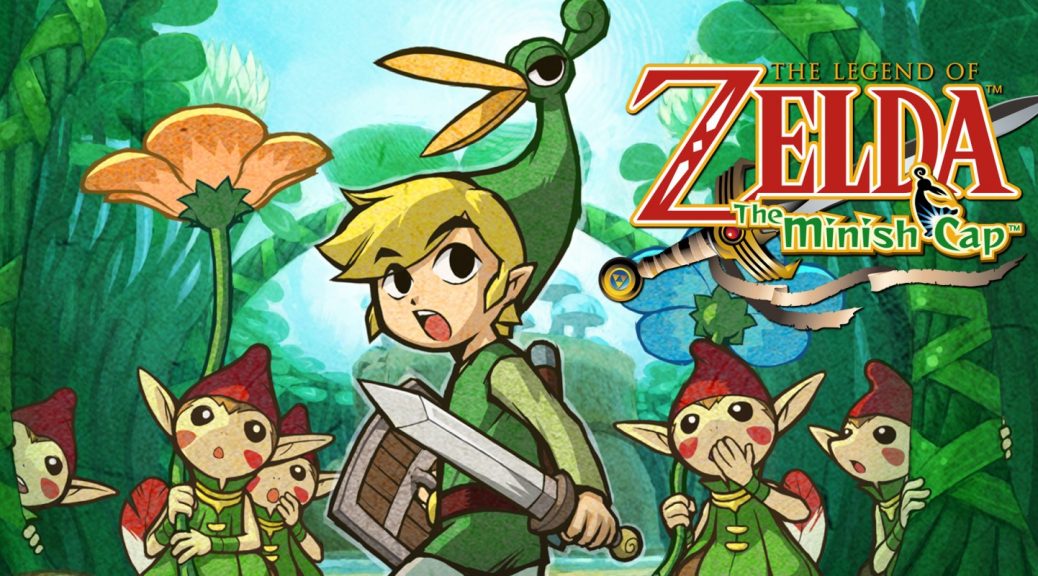
The Legend of Zelda: The Minish Cap
Minish Cap is in the bottom half of my personal Zelda ranking, but it’s not for lack of trying. In fact, it feels like a much more significant title than most other handheld entries. It was previously allowed to bear the crown of earliest title in the timeline and thus depicted the origin of a number of franchise staples (until Skyward Sword came along and retconned most of it away), and its world has the Majora’s Mask quality of being small but richly detailed. It’s also not at the actual bottom of the ranking, because it doesn’t have any obviously bad ideas; it just doesn’t execute the ideas it does have in an optimal way. The result is simply a pretty good installment with some room for improvement.
The centrepiece mechanic is the ability to shrink to the size of your thumb using special portals. It’s a generally charming feature that’s used in a number of clever ways, from commandeering lily pad rafts to infiltrating machinery, particularly as part of the unusually complex and twisting dungeons. It functions almost as another instance of the franchise’s semi-trademark dual-world gameplay, though it falls short of the usual impact because it doesn’t actually affect the world itself, so it often feels like traversing the same distance twice. Exploration of the overworld is more arbitrarily restrictive than usual as well, likely to accommodate this mechanic.
The other major addition is Kinstone fusion, a sort of lock-and-key system that nearly every NPC engages in, which can unlock and tweak dozens of different things across the world. It creates some neat surprises early on, but its random and disconnected nature makes actively seeking out sidequests a tiresome process. Other than these features, Minish Cap is just fine. The music and visual design are good but not great, and the controls are solid. The combat is fairly easy, but the bosses put up a decent fight, and the puzzles are as difficult as Zelda puzzles get without veering into the mystery logic of the NES games. What more can you expect from a handheld installment?